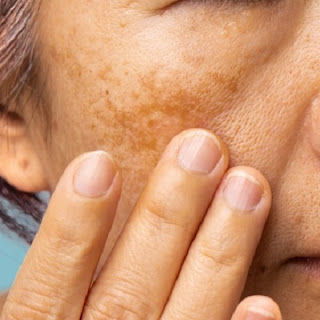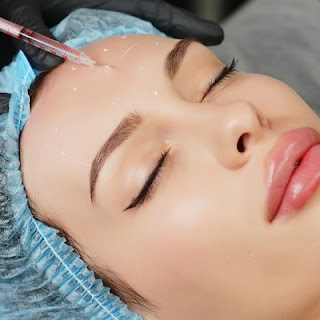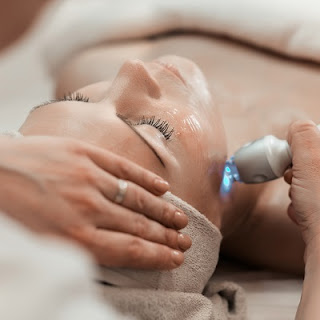Melasma - Everything You Need To Know
Melasma: What is it?
Skin disease called melasma, which primarily affects women, is not harmful. It is categorized as a pigmentation condition and causes the skin to develop dark brown or gray spots.
Melasma, sometimes known as the "mask of pregnancy," is particularly frequent among pregnant women. Men can also develop it, albeit it happens very infrequently. According to the American Academy of Dermatology, men account for only 10% of all Melasma instances.
Melasma types
Epidermal melasma: This form of melasma is distinguished by a dark brown area with a distinct border and is more likely to respond well to melasma therapies.
Dermal melasma: This form can be challenging to cure and results in a light brown or bluish spot on the skin.
Mixed Melasma: It manifests as a hybrid of the other two varieties and is distinguished by regions of discoloration that are both dark and light brown or grey.
The signs of melasma
Brown or gray areas of discolored skin are the hallmark of melasma. These patches mostly affect the face, most frequently the forehead, cheeks, chin, nasal bridge, and upper lip. Sometimes, they are discovered on different parts of the body.such as those parts of the body that are frequently exposed to sunlight, such the neck, shoulders, and forearms.
Since the patches are frequently symmetrical, one can see identical melasma marks on both sides of the face. Melasma-related discoloration tends to fade and darken over time. According to many melasma patients, the patches develop darker in the summer and lighter in the winter.
Melasma is absolutely safe and has no symptoms, yet it frequently makes people feel self-conscious.
When Should I Get a Melasma Exam?
As soon as you notice skin discoloration, you should see a doctor who will recommend you to a dermatologist so that you can receive an accurate diagnosis and begin the appropriate therapy.
Reasons for melasma
Researchers and medical experts are still trying to pinpoint the precise etiology of melasma. It has been connected to a malfunction of the skin's melanocytes, which can result in them producing too much melanin. Additionally, a number of other factors, such as the following, may cause melasma:
using contraceptives and birth control pills
pregnancy-related hormonal imbalance
exposure to sunlight
Reaction to cosmetic and skin care products
Thyroid illness and stress
Risk Elements for Melasma
Melasma risk factors include the following:
The likelihood of developing melasma rises with being a woman. Among all cases of melasma, 90% are seen in women.
Your risk of getting melasma rises if you have darker skin.
You may be more likely to develop melasma if you have a blood relative who already has it.
Diagnosis of melasma
The majority of the time, melasma can be identified by a visual inspection alone. During the visual inspection, the Wood's lamp examination is a frequently used method. During this operation, a unique tool called a Wood's light is utilized to see beneath the skin and screen for bacterial and fungal infections. Additionally, it enables medical professionals to ascertain how many skin layers have been impacted.
To identify the precise cause of melasma, more medical tests might be performed. Your doctor may do a biopsy, in which a small sample of skin from the affected area is collected and analyzed, to look for skin disorders that may have caused your melasma.
Visit a dermatologist to have yourself evaluated and tested for melasma in Royal Cosmetic Surgery Clinic
Melasma Therapy:
Melasma may occasionally go away on its own without medical intervention. This is mostly observed in women whose melasma was brought on by pregnancy or birth control pill use. However, melasma is typically a persistent condition. It may potentially be untreatable and last for years.
There are medical procedures that aim to treat melasma, such as:
Patients with melasma are prescribed hydroquinone medication: It is applied to the skin patch that is affected and is available as a cream, ointment, lotion, or gel.
The medications hydroquinone and tretinoin may be prescribed together: The skin is lightened using medical lotions that contain tretinoin and corticosteroids. Additionally, there are triple creams on the market that combine hydroquinone, tretinoin, and corticosteroids.
Melasma can be partially or completely treated with skin procedures such as dermabrasion, microdermabrasion, laser treatment, or a light-based procedure. When melasma is caused by UV damage to the skin, laser and light therapies can help. For example, green-light therapy for melasma is commonly used to treat UV damage and lighten the skin.
Melasma medical procedures are only used as a last resort. They can cause skin irritation, recurrence of melasma, and other skin conditions if not performed correctly for the patient's skin type. Consult your dermatologist if you are unsure about the best treatment for your skin or if you experience any side effects following the procedure.




Comments
Post a Comment